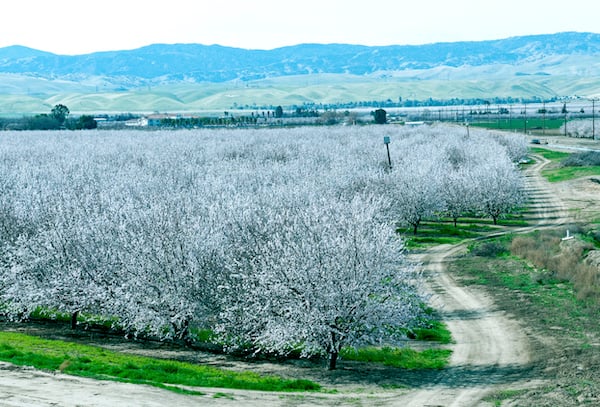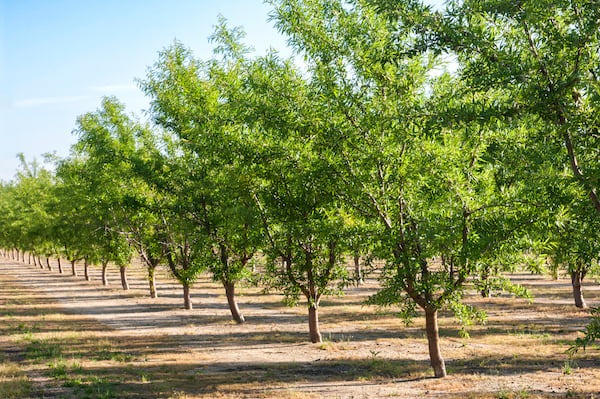Intentional water stress—or “deficit irrigation"—is gaining attention among California tree nut growers as research continues to strengthen the argument for using less water at key points in the season. When done correctly, studies suggest that deficit irrigation has no negative impacts on yield—and growers can actually maintain or improve nut quality while simultaneously reducing costs.
“When I think about early-season water stress, it’s about how long [growers] can wait,” says Mallika Nocco, University of California Cooperative Extension (UCCE) specialist and director of the Conservation Irrigation Lab at UC Davis.
Nocco says mounting evidence suggests that if growers can wait to begin irrigating, trees will be able to develop a better rooting structure and more exploratory root systems. Delaying irrigation may also allow more oxygen to be present in the rooting zone at the beginning of the season.

“Growers can think of it as a more complex approach to timing,” says Nocco. “We have equations if growers just want to match the evaporative demand of the environment. But we’re learning through deficit irrigation studies—and waiting just a little bit longer—that maybe the best thing for a crop isn’t always to match the evaporative demand.”
Any potential upside to a management strategy that helps save on water without hurting yield is good news for California orchards—especially this year. The state's nut-growing regions are well behind in precipitation for the season.
According to UCCE’s Growing the Valley podcast, in December, California was only at 10% of what it normally needs in precipitation, a very slow start to a winter—and it seems spring rains are never going to arrive to help. The state is “definitely entering into a new drought cycle,” says Alan Fulton, UCCE irrigation and water resources advisor emeritus–which also means more competition for groundwater.

While there's growing consensus that deficit irrigation may benefit nut trees, questions remain as to what stem water potential should be at the time growers initiate irrigation—in other words, when exactly does evaporative demand get high enough?
What works in the northern Sacramento Valley probably won’t be ideal for the southern San Joaquin Valley, and may come down to growers budgeting their water. In addition to closely monitoring weather and soil moisture, extension experts advise growers to evaluate stem water potential at critical times of year—for almonds, early in the season and at hull split—in order to make an informed decision about when to turn the water on.
Aerial imagery offers a cost-effective and practical alternative to pressure bomb testing–and a way to evaluate water stress across the entire orchard. Contact us to learn more.
